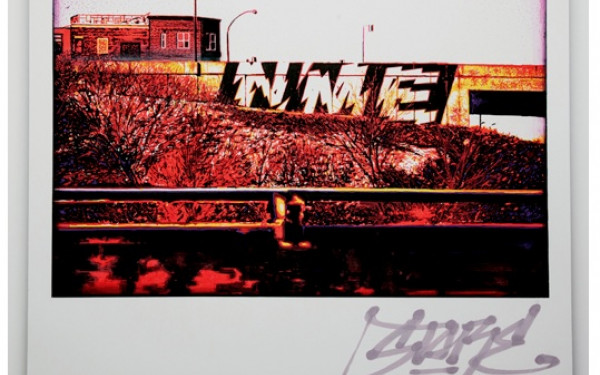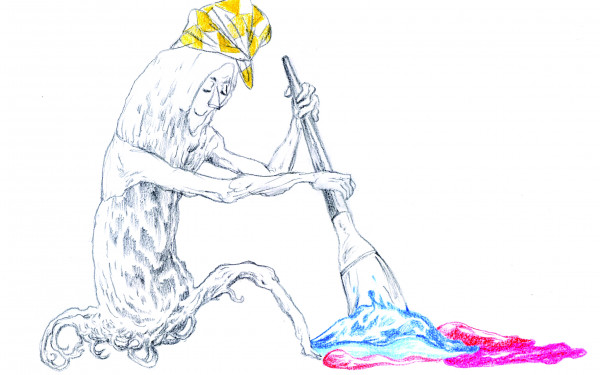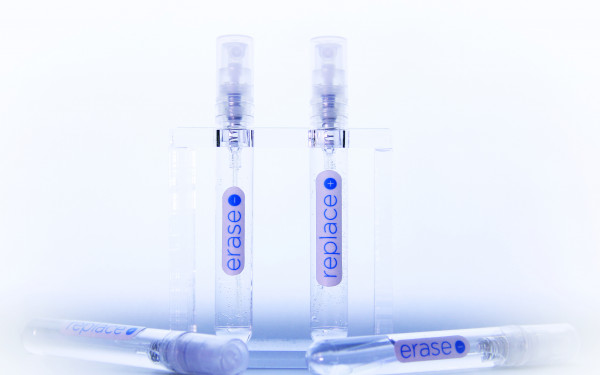Putting Data to Rest
Artist Audrey Samson Orchestrates a Symbolic Funeral for Your Digital Data
We’re constantly leaving our footprints in the digital world, whether by chatting online or posting a picture on our Instagram. Our data is saved for the use of big corporations and governments, but also piled up on our own computers for personal use.
The implications of the colossal amounts of data we produce and leave behind have pushed many to reflect on being able to erase our digital footprints, or our “virtual double.” However, it’s nearly if not completely impossible to do so.
Artist, media designer and researcher Audrey Samson thus proposes to orchestrate a symbolic funeral for digital identities. The resident artist at Eastern Bloc will be collecting and embalming digital storage devices, on which the owners will have saved specifically chosen data they would like to put to rest. The project is a continuation of ne.me.quittes.pas, a previous art project of hers, consisting of the destruction of digital storage devices with acid upon request from the owners.
Samson’s new project Pompes Funèbres/Faites Embaumer Vos Données Digitales tries to point to the materiality of data and its consequences. However, just as important to the project is people’s desire to put their digital data to rest. Samson states that her project gives people an occasion to mourn their digital data.
Audrey Samson intends to embalm small data storage devices using epoxy, sealing them forever. The embalmed devices will be presented at Eastern Bloc in Montreal from April 1 to 5 as an art exhibition, but also as an occasion for mourning. The remains will then be sent back to their owners for private display.
Additionally, Samson will attempt the performance of a live embalmment by casting data storage devices on site. Guests will be able to bring their own small data storage devices on the night of the show’s opening, have them embalmed and be able to bring them back home.
“We have a lot of digital information and digital traces online and this has many consequences, as we’ve seen with cases of government surveillance,” Samson explained.
“‘Big data’ has promised to help with all the world’s problems. For example, with big data we could make better businesses or have better understanding of our populations, etc. […] I guess I’m trying to point to the consequences of all this data storage, analysis and surveillance and to remind people that there’s another side to ‘big data.’”
The other idea Samson explores in her project is the complicated and sometimes abstract relationship between digital technologies and data.
“I want to reflect [on] the fact that we don’t often think about data as being part of ourselves,” Samson said. “But I think that increasingly, when we look at how our memories and data are externalized, for example, in Google or Facebook servers, we need to start to consider that this data is in a way part of ourselves.”
Samson delves into this idea more specifically through the example of online mourning.
“We see this emerge with ‘digital deaths’. More and more people are starting to think about what happens to a person’s data after they die.
“Big Data, digital death, online mourning and putting digital identities and data to rest are all related to the idea of the materiality of data,” according to Samson.
“What brings it all together, for me, is the materiality of data. Data is often considered to be a very immaterial thing—we have all these metaphors like ‘the cloud’ and even the word ‘uploading’ just sounds like you’re sending it to outer space.
“This is actually really false,” Samson continued. “Data has a really physical component: it goes through people and networks and servers and things like that. If the Facebook server burns down, well, everything goes. There is a very tangible aspect to data.”
Samson explained that the preconceived notion that data is immaterial can actually serve commercial and governmental interests.
“If you keep thinking that data isn’t really part of you and it’s all up in the air and it’s not very tangible, then it’s really easy to just catalogue people’s information without them really thinking about it”, said Samson.
“There’s a part of them that wants to remember, but another part that needs to forget, because otherwise they would go crazy. Mourning is about slowly forgetting, in a way,” Samson continued. “I think that we have that kind of relationship to data, like when people say, ‘Oh I wanted to erase this thing, but I really don’t think I can.’ I think that in the people who participate, there are a lot of them who want closure.”
Samson is still looking for participants for her project. If you’ve ever wished to erase any of your digital traces, you can bring your devices to her at an open lab night (or at any other moment) and they will be coated in epoxy and presented during the exposition.
You can also bring your digital storage material the night of the show’s opening and have them embalmed. If you’re interested, you can contact Audrey Samson at mail@ideacritik.com. To read more about her ideas and past projects, her essay “Erasure, an attempt to surpass datafication” is available online to everyone.
Pompes Funèbres/Faites Embaumer Vos Données Digitales // April 1—April 5 //Eastern Bloc (7240 Clark St.) // 8 p.m // Free

_900_548_90.jpg)
_600_832_s.png)



2_600_375_90_s_c1.jpg)
